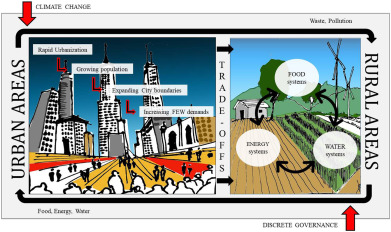This book chapter advances SDGs 6, 10 and 11 by discussing our vulnerability to water disasters to help us avoid some of them in the future.
To what extent is scientific research related to societal needs? To answer this crucial question systematically we need to contrast indicators of research priorities with indicators of societal needs. We focus on rice research and technology between 1983 and 2012. We combine quantitative methods that allow investigation of the relation between ‘revealed’ research priorities and ‘revealed’ societal demands, measured respectively by research output (publications) and national accounts of rice use and farmers’ and consumers’ rice-related needs.
This article shows that research in the design of 100% renewable energy systems in scientific articles is fairly new but has gained increasing attention in recent years. In total, 180 articles published since 2004 have been identified and analysed. Many of these articles have a predominant focus on the electricity sector. However, an increasing number of studies apply a cross-sectoral holistic approach on the entire energy system.
This viewpoint reviews key assessments from the IPCC Special Report on Global Warming of 1.5 °C and examines the implications for the Sendai Framework for Disaster Risk Reduction (SFDRR). Disaster risks are expected to be higher at 1.5 °C and continue to increase at 2 °C. Current and future disaster risk management particularly those that deal with the impacts of coastal flooding, heat-related health impacts, sea level rise, and forest fires are to be strengthened, particularly the Arctic, Caribbean, SIDS and low-lying coastal areas are particularly at risk.
The UN has adopted the Sendai Framework for Disaster Risk Reduction (2015–2030; SFDRR) in March 2015 and the member countries agreed to shift from disaster management to disaster risk management. The SFDRR is in line with the UN Sustainable Development Goals (SDGs; September 2015). In 2016, the UNISDR together with partner organizations has prepared roadmap for mainstreaming Science and Technology in SFDRR. Out of four priority areas, this paper focuses on the appraisal of challenges in SFDRR priority 1 “understanding disaster risk” through the lens of science, technology and innovations.
Healthy psychological and brain development is not a privilege, but a fundamental right that requires special protections and opportunities for building cognitive, emotional, and social skills necessary for becoming a contributing member of our society. Healthy psychological and brain development is not a privilege, but a fundamental right that requires special protections and opportunities for building cognitive, emotional, and social skills necessary for becoming a contributing member of our society.
Metal halide perovskite materials have revolutionized the solution-processed solar cells and become the vanguard of research focus with an unprecedented improvement of power conversion efficiencies up to 23.3%, which pose a remarkable challenge to thin film and multicrystalline silicon photovoltaics. Nevertheless, for conventional perovskite solar cells based on lead, it is ineluctable to take the toxicity of lead and the long-term stability of the devices into consideration when the deployment of this technology in mass production is put on the agenda.
The “build back better” (BBB) approach to disaster recovery was first introduced in 2006 by the United Nations Secretary-General's Special Envoy for Tsunami Recovery, former US President William Clinton. In 2015, BBB became the second half of Priority 4 of the Sendai Framework for Disaster Risk Reduction 2015–2030, in recognition of its widespread use and adoption among disaster risk management practitioners, policy-makers, and researchers.
This study identifies the key barriers to operationalizing FEW nexus at ground level and underlines the need for urban-rural shared perspectives in resource management.
This book chapter addresses SDG 5 with delivering key career advice collected from 23 female professors specific for young women.

